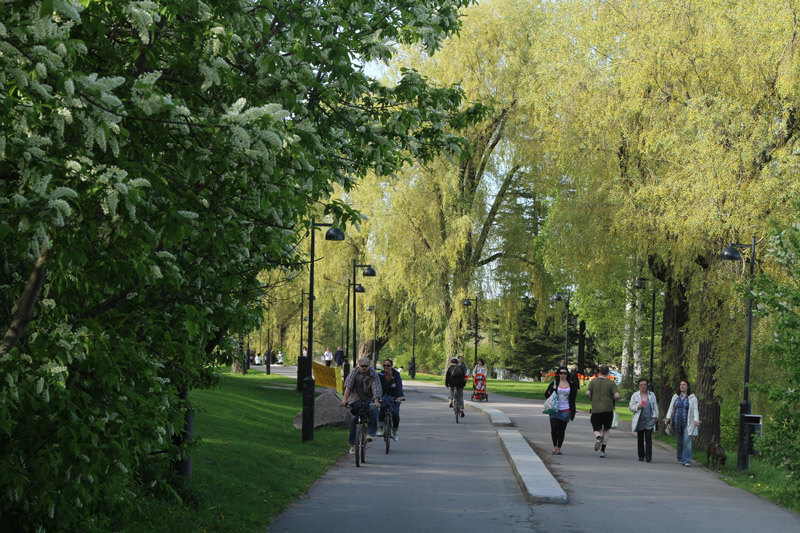Hesperia Park and Hesperia Esplanade form an impressive green area where there were once factories and private villas beside the Töölönlahti bay. A 2.2-kilometre recreational path circles the bay and is also accessible the entire way by wheelchair.
The name Hesperia is connected to the romantic trend in the early 1800s. Hesperia was the poetic name used by the ancient Greeks to describe the mythical lands far off to the west. Hesperos refers to the evening star, and in Greek mythology the Hesperides were nymphs who tend a blissful garden in a far western corner of the world. Hercules is said to have collected golden apples from their garden.
Hesperia Park boasts many tree species, including crabapple trees, cherry trees, alders, oaks, poplars, elms, maples, birches, horse chestnuts, ash trees, lindens and a delightful sweet bird cherry. A rare “Katherine Havemeyer” lilac was also found in the park. Although the shrub later died, it was successfully micropropogated and new shoots are growing.
Next to the lilacs is a play area. A rich assortment of lilacs once grew alongside the main road, Mannerheimintie, until the city’s wild rabbits destroyed some of them in 2008 and 2009. New saplings have since been planted, and the shrubs in the park have been protected by wire fencing.
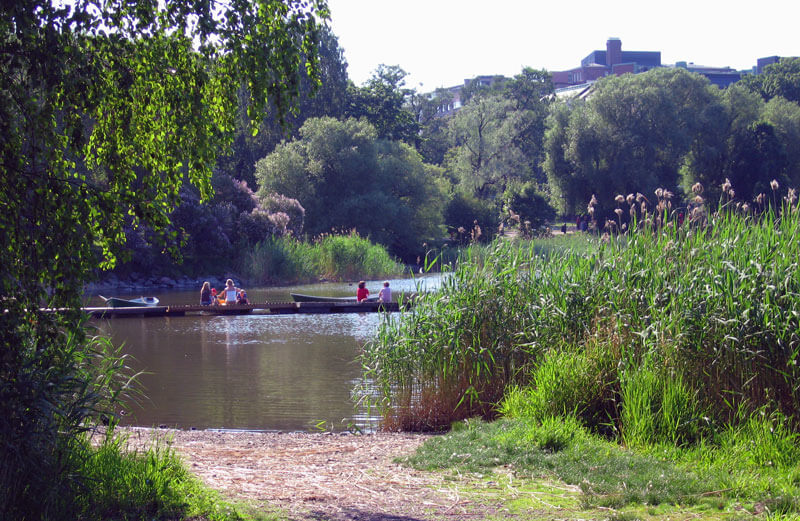
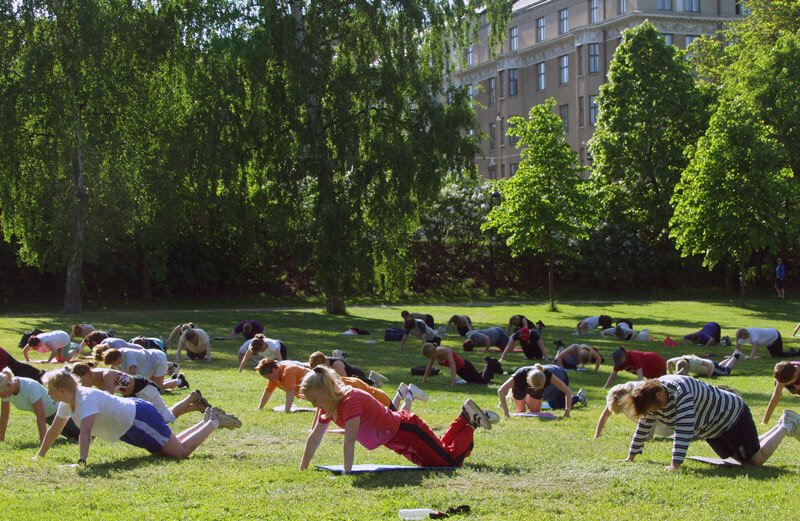
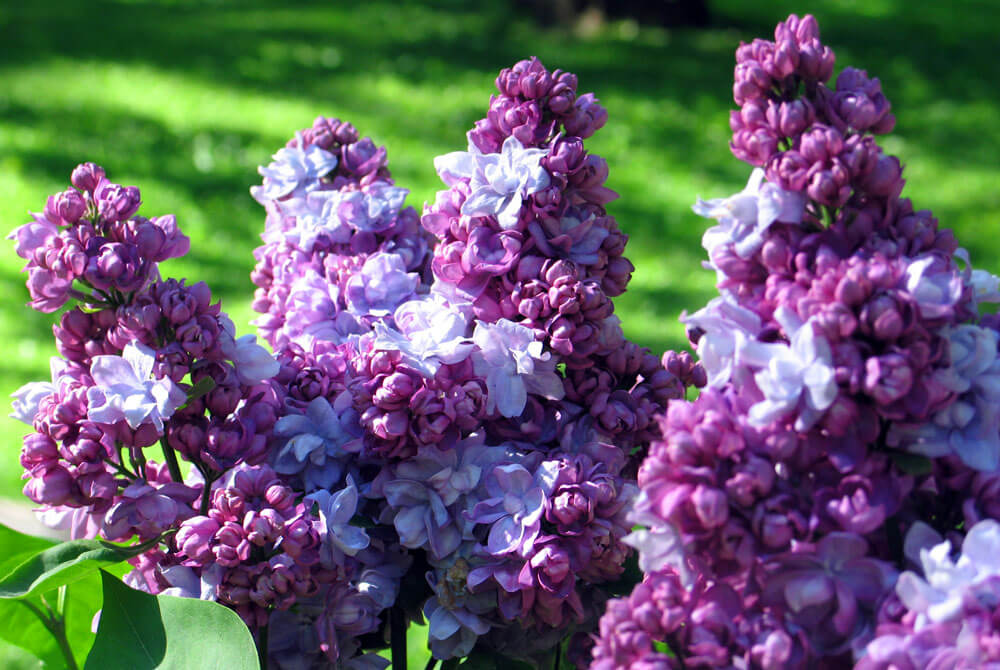
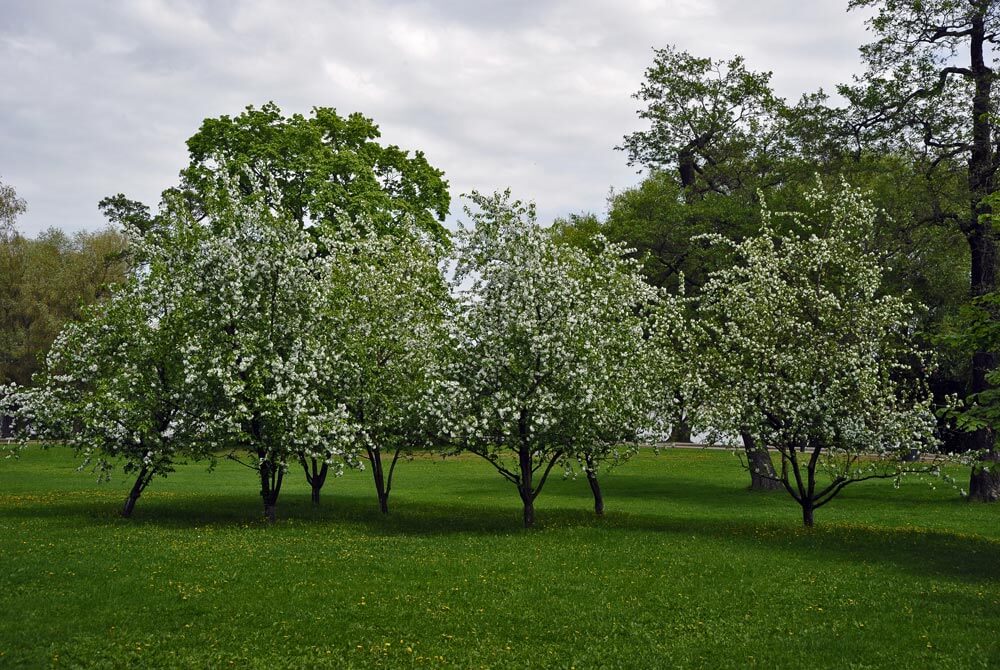
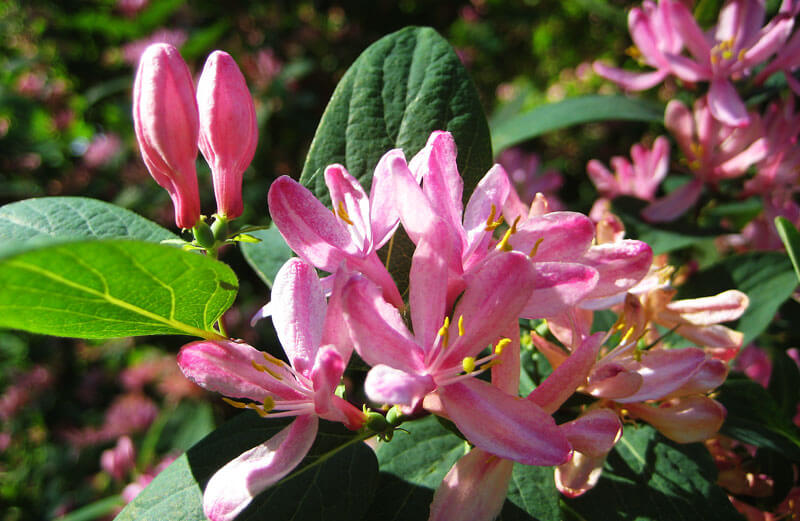
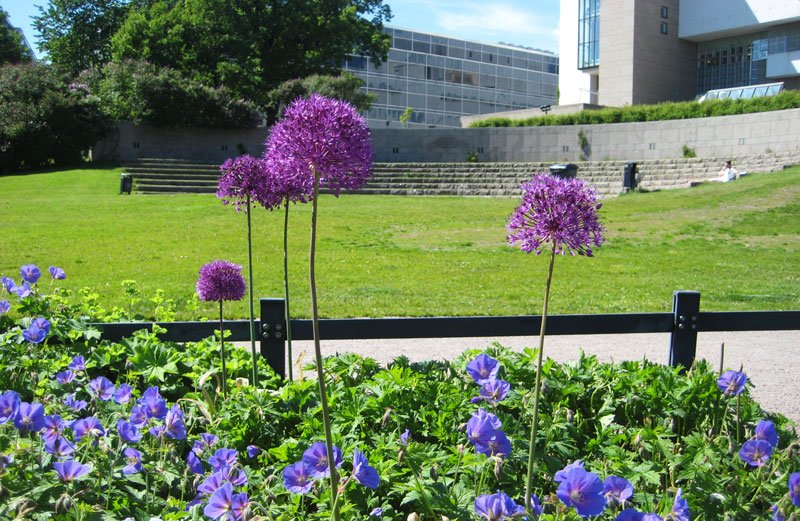
On the edge of the park by Mannerheimintie is a statue of Larin Paraske (1833–1904), a central figure in Finnish folk poetry. The statue was designed by Alpo Sailo (1877–1955) in 1936 for the Kalevala building, which was never realised. The statue was finally erected in Hesperia Park in 1949.
On the bay side of the park is a serpentine sculpture entitled Opera Ophidia. The work consists of steel netting filled with rocks. The sculpture was made by the artist group Ossi Somma, Reijo Paavilainen and Pertti Mäkinen and was part of a park exhibition commemorating Helsinki as one of the European Cities of Culture in 2000. It is derived from a work created for the group’s 20th anniversary exhibition in 1999, where the serpentine form was shown from above. The exhibition toured around Finland and the contents of the netting changed accordingly: in Pori, the work was filled with rocks, in Rovaniemi with ice and in Alajärvi with peat. Opera Ophidia attracted a lot of attention at the Töölönlahti sculpture exhibition, especially among children. After the exhibition, the work was left in place indefinitely, because dismantling would have meant its destruction. It is still owned by the artist group.
Between Opera Ophidia and the bay is a rock with a Sri Chinmoy Peace-Blossom memorial plaque. The plaque is dedicated to world peace and is inscribed with the date on which it was unveiled, 13 November 1998.
The Finnish National Opera was designed by architects Hyvämäki, Karhunen and Parkkinen and completed in 1993 in the northern section of the park. Nearby is the fine-dining Restaurant Töölönranta.
